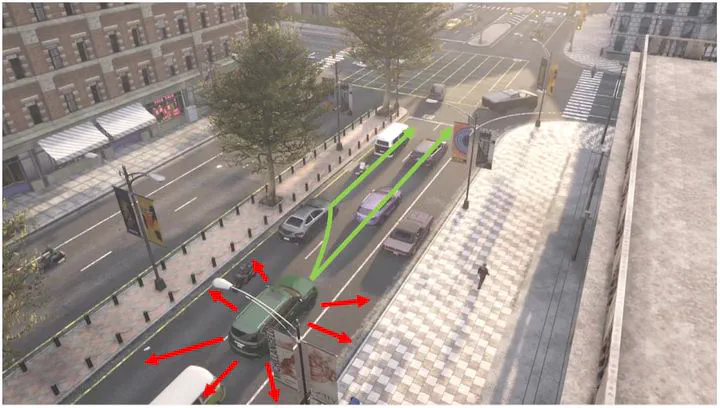Deep Stochastic Kinematic Models for Probabilistic Motion Forecasting in Traffic
Oct 1010, 1010·, ,,,·
0 min read
,,,·
0 min read
Laura Zheng
Sanghyun Son
Jing Liang
Xijun Wang
Brian Clipp
Ming C. Lin

Abstract
In trajectory forecasting tasks for traffic, future output trajectories can be computed by advancing the ego vehicle’s state with predicted actions according to a kinematics model. By unrolling predicted trajectories via time integration and models of kinematic dynamics, predicted trajectories should not only be kinematically feasible but also relate uncertainty from one timestep to the next. While current works in probabilistic prediction do incorporate kinematic priors for mean trajectory prediction, variance is often left as a learnable parameter, despite uncertainty in one time step being inextricably tied to uncertainty in the previous time step. In this paper, we show simple and differentiable analytical approximations describing the relationship between variance at one timestep and that at the next with the kinematic bicycle model. In our results, we find that encoding the relationship between variance across timesteps works especially well in unoptimal settings, such as with small or noisy datasets. We observe up to a 50% performance boost in partial dataset settings and up to an 8% performance boost in large-scale learning compared to previous kinematic prediction methods on SOTA trajectory forecasting architectures out-of-the-box, with no fine-tuning.
Type
Publication
2024 IEEE/RSJ International Conference on Intelligent Robots and Systems (IROS)